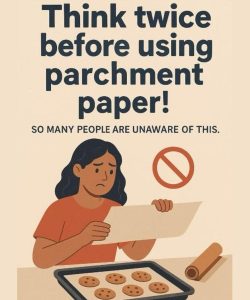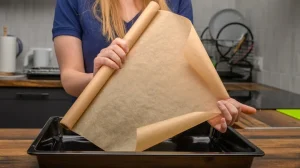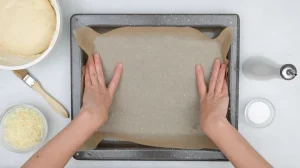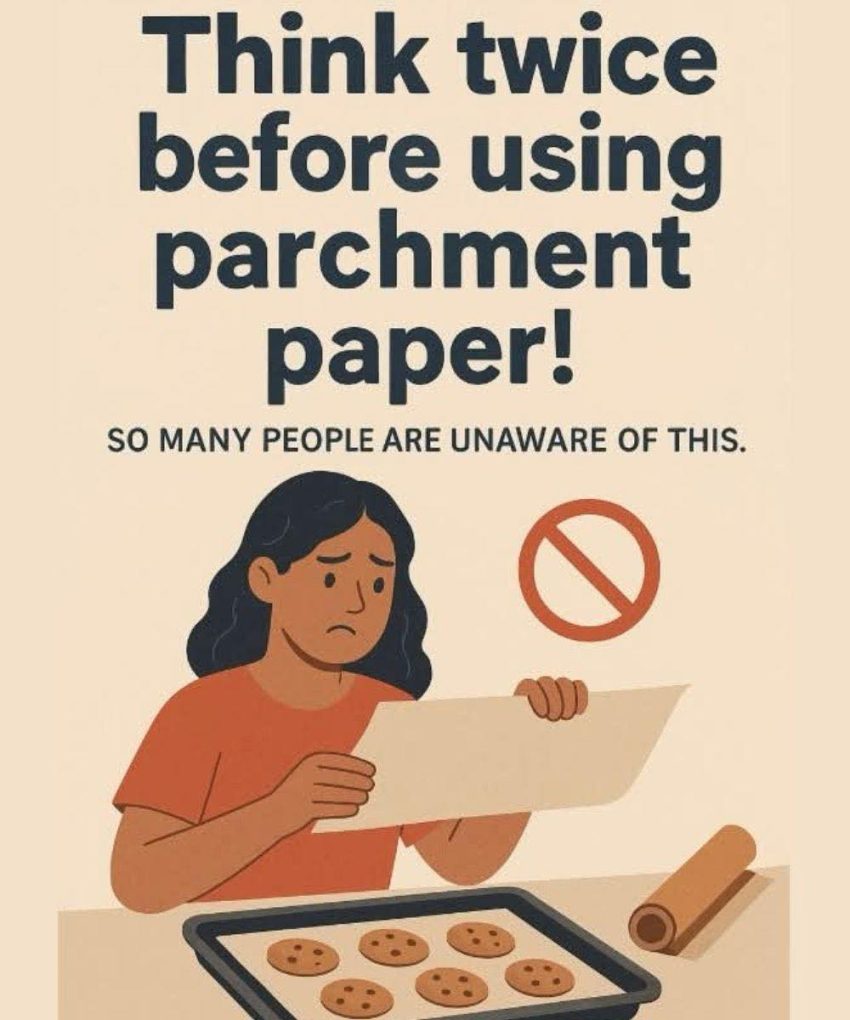If you’re like a lot of home cooks over 60, you probably use parchment paper a lot in the kitchen. It makes it easy to bake cookies, helps veggies roast without sticking, and makes cleaning up faster. A lot of people don’t know that parchment paper can be a fire hazard if you use it wrong, even if it seems like a safe and even useful item.
Yes, parchment paper may catch fire. More often than you might think, it happens.
Let’s take a closer look at why this happens, the most common mistakes people make, and some safer ways to create your favorite foods, especially those that require a lot of heat.
Why parchment paper doesn’t catch fire Parchment paper is different from other types of kitchen paper. It has a layer of silicone on it that doesn’t stick to heat. But here’s the thing: being heat-resistant doesn’t mean anything is fireproof.
Most types of parchment paper can only endure temperatures up to 420°F. Some can get as high as 450°F, but that’s the highest they can go. When the temperature gets too high, parchment paper can turn brown, smoke, or even catch fire.
Even if you are careful with the temperature, parchment paper can still catch fire if it touches a hot surface directly, like the coils or walls of your oven. The edge of the parchment paper might easily curl up near the coil of the broiler.
Older individuals who might use parchment to avoid washing pans or getting food stuck on them need to know how and when to use it safely even more.

Common Mistakes That Can Be Dangerous
People don’t start a lot of fires with parchment paper because they were irresponsible; they do it because they didn’t know any better. Here are some of the most common ways that people don’t use this common item correctly:
1. Using Parchment in Broil Mode
Broiling is great for getting the top of a casserole crispy or searing a steak, but it uses very high, direct heat that can go above 500°F. That’s a long way past the point where parchment is safe.
It’s easy to start a fire in the kitchen by using parchment paper in the broiler.
2. Letting the paper hang down over the pan
It might not seem like a huge problem to have a little extra paper sticking out of the corners of your baking tray. But the loose and curling edges are the first to catch fire.
They can catch fire if they touch the heating element or the walls of a hot oven. Cut the paper so that it fits snuggly in your pan every time.
3. Use parchment paper in air fryers or toaster ovens
Toaster ovens and air fryers are small gadgets that focus heat in small areas. That means that the heating parts are frequently only a few inches away from the parchment paper.
If the paper doesn’t have enough food or weight to keep flat, it can soon float, curl, and touch the heated coils, which can start smoke or fire.
4. Putting wax paper and parchment paper next to each other.
This is easy to do if your kitchen drawer is filled of things. But it’s also really dangerous.
Parchment and wax paper seem alike, however wax paper has wax on it instead of silicone. That wax melts at low temperatures and can catch fire much lower than 400°F. You should never put wax paper in the oven. It’s only good for items that are cold, like wrapping cheese or separating frozen foods.
How to Use Parchment Paper Safely (and Not Burn Dinner)
As long as you follow these simple rules, you can still safely use parchment paper in your cooking:

Always check the temperature limit
In bold letters on the package or the paper itself, most companies say what the safe temperature is. Stick with it. If the label says not to go above 420°F, don’t.
If the recipe states to roast at 450°F or above, it’s safer to use aluminum foil that isn’t covered or lower the oven down a touch.
✅ Trim the Edges
Cut the paper so that it fits in your pan or baking dish without sticking out. Avoid creases, loose edges, or overhangs that could curl up.
Don’t Go
One of the most important things to remember is to stay in the kitchen while using parchment paper in a hot oven. This warning is much more necessary when roasting at higher temperatures, though.
A lot of kitchen fires start in those “just a few minutes” when someone leaves to answer the phone or do something else.
Don’t use it when there is a direct flame.
That means you can’t put it under a heat source, grill it, or broil it. You should only use parchment paper when you don’t want direct heat, like when you put a baking pan in the middle of the oven instead of right beneath a red-hot coil.
When should you use foil instead?
Use heavy-duty aluminum foil when you need to cook something at a very high temperature, such when you roast root vegetables at 475°F or broil fish. It can handle greater heat and won’t catch fire, even if it touches the oven’s hot spots.
Foil is also ideal for grilling and other dishes where browning is important. Foil isn’t non-stick, so you might want to grease the surface gently or spray it with cooking spray.

Have you already seen the warning signs?
If you’ve ever opened your oven and seen the parchment paper,
Curving at the edges
Turning dark brown
Smelling like smoke when it comes out
Your oven is telling you that you’re getting close to the limit of what parchment paper can handle.
Don’t forget about these items. The next stage might be fire. And no one wants to have to deal with a fire in the kitchen when supper is almost ready.
If you use parchment paper the appropriate way, it’s safe.
Parchment paper is still one of the best kitchen tools for senior folks. It keeps pans in great shape, making cooking and cleaning easier on the hands, and saves down on scrubbing. But you have to be careful when you use it, just like with any other tool.
Keep this in mind:
Don’t use it above 420°F unless the box says otherwise.
Never use it to broil.
The edges should never contact the walls of the oven or stick out.
And never confuse it with wax paper.
You don’t have to give up comfort to stay safe against kitchen fires. You can preserve the benefits of parchment paper without putting yourself, your home, or your meals at risk if you are just a bit more careful.
It’s one thing to burn cookies, but a fire in the kitchen is a whole other problem.
